As explained, the sample rate, in Hz, is the number of times a second the analogue EEG signal is stored on a digital computer in a second. During recording we sampled at 1000 Hz - that means for each second 1000 samples were taken for each electrode. In experimental sessions - the EEG recording can often be at least an hour long. So, for 64 electrodes for an hour, we have taken 1000 digital samples a second - all in all that’s a lot of data! For us to be able to manipulate this data for this tutorial we want to be able to do so quickly so we are going to ‘down sample’ and reduce the amount of data we hold. Instead of 1000 samples a second we are going to take one quarter of those data points and down sample to 250 Hz.
How
To down sample the data for this participant click:
-> Tools
-> Change sampling rate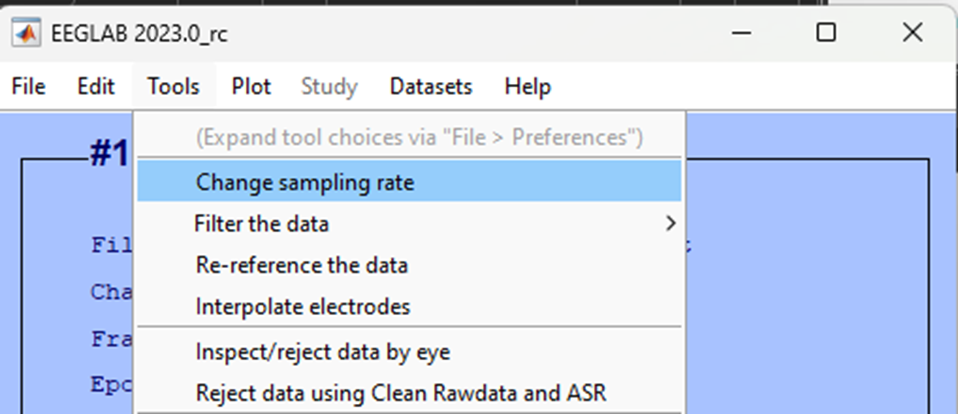
A pop-up will appear, enter 250 as the new sample rate and click Ok.
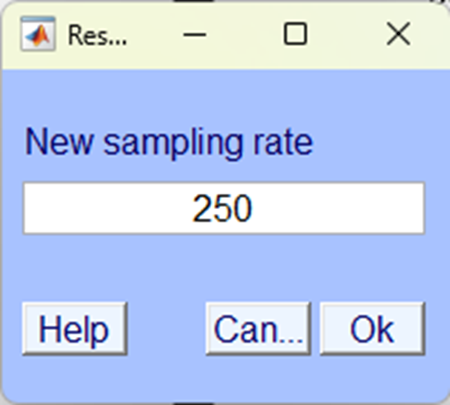
Make sure you select options that will allow you to save your work.
We strongly recommend saving your data after every step of the analysis - this will mean that if you later encounter an issue with your analysis, it will be easy enough for you to pick up from an earlier point and not have to restart all over again. You should use your own labelling system so that you can easily identify each file and the processing that has been done to it.
Next a pop will appear asking you what you want to do with the new dataset - make sure you Name it and select the option to Save it to file then click browse to select an appropriate directory. Use a simple naming convention, this data is from Participant 03 and has been resampled, so we’ve called it p03 resampled and saved it on a local directory, like so:
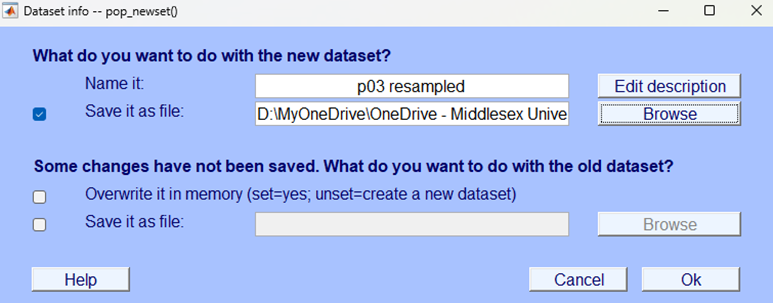
Once you’ve clicked Ok double check everything is as expected.
- Your EEGLAB home window should state that the
Sample rate (Hz)is250.
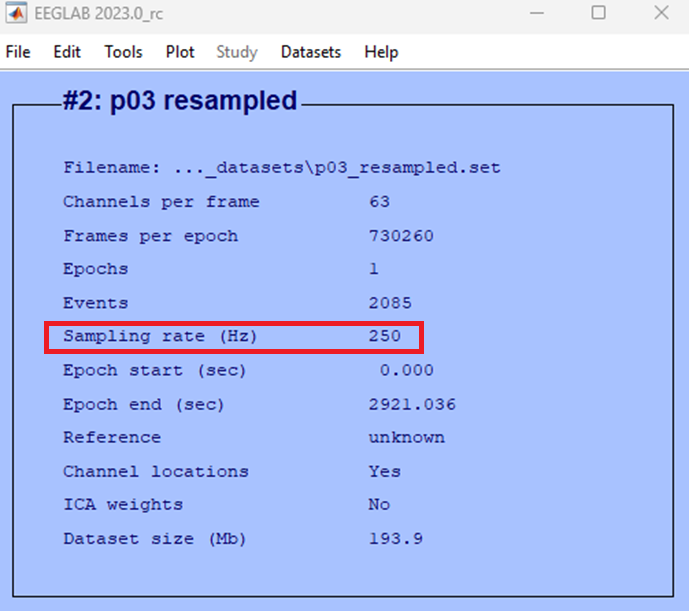
- Use your computer’s file explorer to check that the file is where you saved it - you should see two files as you named them one ending in
.fdtand another ending in.set. Like this:
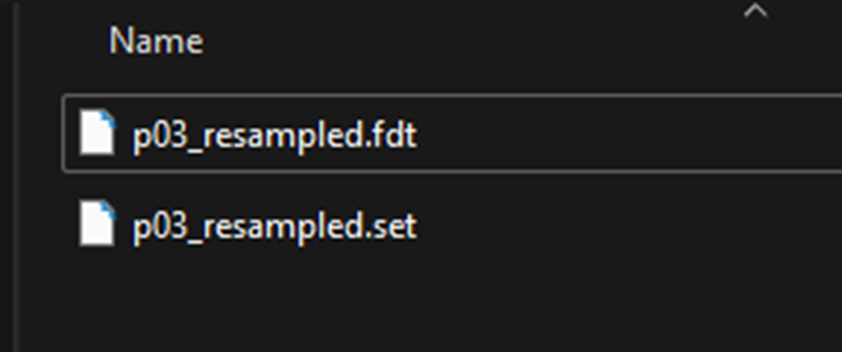
The two file types saved by EEGLAB contains different information. .set files contain the EEG structure but not the data, while .fdt files contain the EEG data but not the rest of the structure. Data structure and how data is held in memory is quite a complicated topic, if you are interested in learning more see information here
Test yourself
Question 1 | Imagine recording from two electrodes with a sample rate of 1000 Hz for 10 seconds. How many bits of data would you have
Question 2 | If the same data as in question 1 was downsampled to 500 Hz, how many bits of data would it contain?
Question 3 | What’s the main reason for down sampling data?